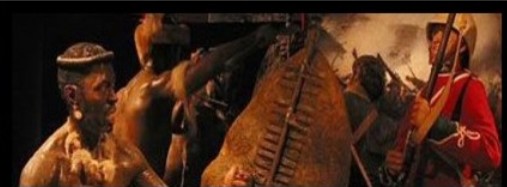| Latest topics | » The Pictorial World - March 15th 1879 Yesterday at 1:13 pm by ben2000 » The lost diary of Pvt James Owen Thu Jul 25, 2024 12:03 pm by miklew » Last of the 24th at Isandhlwana Wed Jul 24, 2024 6:16 pm by John Young » What was the uniform of field marshals/generals in the zulu war? Mon Jul 22, 2024 6:53 am by John Young » Henderson and the NNH at Rorke's Drift  Sat Jul 20, 2024 12:17 pm by SRB1965 » Capt. D. Hayes 1/3rd Regt., NNC Thu Jul 18, 2024 11:11 am by Julian Whybra » The Wrecked Camp Wed Jul 17, 2024 4:33 pm by Julian Whybra » Private N/N John Robert Branch 90th Regiment and his discovered diary Mon Jul 15, 2024 8:53 pm by 1879graves » Private John Scott 24th Regiment a fugitive at large Sun Jul 14, 2024 12:06 pm by 1879graves » 90th foot sgt T. Collins 214 Sun Jul 14, 2024 10:57 am by johnman » Baron Von Steitencron Wed Jul 10, 2024 3:10 pm by Julian Whybra » Sgt Joseph Windridge, Defender of Rorke's Drift - Memorial Tue Jul 09, 2024 3:15 am by 90th » Writing advice Sun Jul 07, 2024 4:04 pm by Julian Whybra » South Africa 1877-79, 1 clasp, 1877-8-9 (4389 Fr. Sergt. S. Smith. O/2. Bde. R.A.) Sun Jul 07, 2024 9:30 am by rai » The trashing of the Zulu monument to the brave warriors at Isandlawana March 12, 2024 has been blamed on scrap metal scavengers. Thu Jul 04, 2024 7:41 pm by ADMIN» The Goodwill Zulu Festival: Celebrating the Welsh and KwaZulu Natal Shared Heritage. Thu Jul 04, 2024 7:27 pm by ADMIN» Any nominal role of G Coy 2/24th regiment  Thu Jul 04, 2024 11:18 am by Wayne » Bassage Diary Thu Jul 04, 2024 9:31 am by Julian Whybra » Prior to Sihayo's Kraal  Thu Jul 04, 2024 9:19 am by 90th » British Fort Locations Thu Jul 04, 2024 3:40 am by 90th » Sergeant 1064 Tom Hick / Hicks G Company 2/24th Regiment Wed Jul 03, 2024 11:05 am by Julian Whybra » A Hungarian soldier in the Zulu War (?) Fri Jun 28, 2024 2:31 pm by Mr M. Cooper » Private 25B/279 Henry Sears Bugler E Company 24th Reg. KIA Isandlwana Thu Jun 27, 2024 1:07 pm by gardner1879 » Hamilton Browne's birthday Fri Jun 21, 2024 9:22 am by Julian Whybra » Zulu "Corps" Thu Jun 20, 2024 6:01 pm by Hobbes » Army Pay Department Personnel Thu Jun 20, 2024 11:49 am by Julian Whybra » Ntshingwayo birth date Sun Jun 16, 2024 11:37 am by Hobbes » Zibhebhu and Cetshwayo's family Wed Jun 05, 2024 9:11 pm by Julian Whybra » Smith's Store/Hotel Wed Jun 05, 2024 6:06 pm by Julian Whybra » Corporal James Frowen Williams F Company.  Tue Jun 04, 2024 5:20 pm by Julian Whybra » Shaka iLembe Sat Jun 01, 2024 1:27 pm by Jon84 » Bugler 1415 Thomas Finn / Flin 90th Regiment  Sat May 25, 2024 11:28 am by johnman » Inspector-General Evelyn Richard Hugh Pollard Tue May 14, 2024 10:13 am by ADMIN» Alfred Fairlie Henderson photographs. Sat May 11, 2024 8:01 am by Julian Whybra » Fairlie's Native Police Thu May 02, 2024 9:12 pm by Hobbes |
| July 2024 | | Mon | Tue | Wed | Thu | Fri | Sat | Sun |
|---|
| 1 | 2 | 3 | 4 | 5 | 6 | 7 | | 8 | 9 | 10 | 11 | 12 | 13 | 14 | | 15 | 16 | 17 | 18 | 19 | 20 | 21 | | 22 | 23 | 24 | 25 | 26 | 27 | 28 | | 29 | 30 | 31 | | | | |  Calendar Calendar |
|
| Top posting users this month | |
| New topics | » The Pictorial World - March 15th 1879 Yesterday at 1:13 pm by ben2000 » The lost diary of Pvt James Owen Thu Jul 25, 2024 12:03 pm by miklew » Last of the 24th at Isandhlwana Wed Jul 24, 2024 5:53 pm by miklew » What was the uniform of field marshals/generals in the zulu war? Sun Jul 21, 2024 12:30 pm by darthvaix » Henderson and the NNH at Rorke's Drift  Fri Jul 19, 2024 1:29 pm by SRB1965 » Capt. D. Hayes 1/3rd Regt., NNC Wed Jul 17, 2024 10:52 pm by Julian Whybra » The Wrecked Camp Sun Jul 14, 2024 8:51 am by 61MECH » The trashing of the Zulu monument to the brave warriors at Isandlawana March 12, 2024 has been blamed on scrap metal scavengers. Thu Jul 04, 2024 7:41 pm by ADMIN» The Goodwill Zulu Festival: Celebrating the Welsh and KwaZulu Natal Shared Heritage. Thu Jul 04, 2024 7:27 pm by ADMIN |
| Zero tolerance to harassment and bullying. | |
Due to recent events on this forum, we have now imposed a zero tolerance to harassment and bullying. All reports will be treated seriously, and will lead to a permanent ban of both membership and IP address.
Any member blatantly corresponding in a deliberate and provoking manner will be removed from the forum as quickly as possible after the event.
If any members are being harassed behind the scenes PM facility by any member/s here at 1879zuluwar.com please do not hesitate to forward the offending text.
We are all here to communicate and enjoy the various discussions and information on the Anglo Zulu War of 1879. Opinions will vary, you will agree and disagree with one another, we will have debates, and so it goes.
There is no excuse for harassment or bullying of anyone by another person on this site.
The above applies to the main frame areas of the forum.
The ring which is the last section on the forum, is available to those members who wish to partake in slagging matches. That section cannot be viewed by guests and only viewed by members that wish to do so. |
| Fair Use Notice | | Fair use notice.
This website may contain copyrighted material the use of which has not been specifically authorised by the copyright owner.
We are making such material and images are available in our efforts to advance the understanding of the “Anglo Zulu War of 1879. For educational & recreational purposes.
We believe this constitutes a 'fair use' of any such copyrighted material, as provided for in UK copyright law. The information is purely for educational and research purposes only. No profit is made from any part of this website.
If you hold the copyright on any material on the site, or material refers to you, and you would like it to be removed, please let us know and we will work with you to reach a resolution. |
| | | The Missing Colours Isandlwana |  |
|
+10Saul David 1879 NMP 90th bill cainan Frank Allewell 24th tasker224 Chelmsfordthescapegoat Drummer Boy 14 impi 14 posters | |
| Author | Message |
|---|
Drummer Boy 14
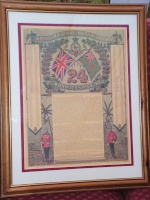
Posts : 2008
Join date : 2011-08-01
Age : 27
 |  Subject: Re: The Missing Colours Isandlwana Subject: Re: The Missing Colours Isandlwana  Tue Oct 25, 2011 9:43 pm Tue Oct 25, 2011 9:43 pm | |
| Yes Littlehand both Colours of the 2nd Battalion where definatly at Isandlwana in the Gaurd Tent.
I can think of at least 5 books that say so here are some
How can men die better
Like wolves on the fold
The washing of the spears
Cheers
DB14 |
|   | | Saul David 1879
Posts : 527
Join date : 2009-02-28
 |  Subject: Re: The Missing Colours Isandlwana Subject: Re: The Missing Colours Isandlwana  Tue Oct 25, 2011 9:55 pm Tue Oct 25, 2011 9:55 pm | |
| But doe's it mention the authors sources, of the books you mention, or are talking hearsay evidence. |
|   | | Drummer Boy 14

Posts : 2008
Join date : 2011-08-01
Age : 27
 |  Subject: Re: The Missing Colours Isandlwana Subject: Re: The Missing Colours Isandlwana  Tue Oct 25, 2011 10:22 pm Tue Oct 25, 2011 10:22 pm | |
| Mr David,
Like Wolves On The Fold containes the full reports from Major Wilson Black on
his returns to isandlwana.
They are very detailed and well worth reading, hopefully another member can scan
page 277 on the forum so we can all read it.
Hope this helps
Cheers
DB14 |
|   | | Drummer Boy 14

Posts : 2008
Join date : 2011-08-01
Age : 27
 |  Subject: Re: The Missing Colours Isandlwana Subject: Re: The Missing Colours Isandlwana  Tue Oct 25, 2011 10:35 pm Tue Oct 25, 2011 10:35 pm | |
| Here is a couple of snipits from the first report
"The greatest number counted together within a very small compass was 68, and these where in the left
rear of the 1st/24th, near the officers mess-tent."
"It was considered that it would be 3 or 4 weeks before the bones could be collected and buried. Were an attempt to be made to do so now, nothing could be done but to throw earth over the corpes. Close to the small heap of dead bodies before mentioned the Colour belt of the 1st 24th was found by Corporal Groschky, Natal Police; it was the most intresting thing found, though not perhaps the most valuable, as Captain Symons found a large bundle of cheques belonging to him that had not been opened."
Sorry about spelling i have just hand typed it out the book.
Hope it maybe of some use
Cheers
DB14 |
|   | | impi

Posts : 2308
Join date : 2010-07-02
Age : 44
 |  Subject: Re: The Missing Colours Isandlwana Subject: Re: The Missing Colours Isandlwana  Tue Oct 25, 2011 10:46 pm Tue Oct 25, 2011 10:46 pm | |
| Just out of interest.
"In July 2003, the Group was presented with replica Colours of the 2nd Battalion 24th Regiment of Foot. The original Queen's and Regimental Colours were lost at Isandlwana and were never found (incidentally, those of the 1st Battalion are laid up in Brecon Cathedral). The 2nd 24th replicas were the result of research by two members of the group, Roger Manning and Duncan McDonald, who worked closely with both the Regiment and also the College of Heralds. Funded by group members, the Colours were produced in Pakistan by military embroiderers. They were formally presented to the group by Mrs Shan Legg-Bourke, then Lord Lieutenant of Powys, Mrs Penelope Bourdillon, then High Sheriff of Powys, Brigadier Robert Aitkin (160 Brigade), and the Group's Honorary Colonel, Timothy Van Rees. It is a tremendous and unique honour for the group to hold these Colours."
Source: 1879Group. |
|   | | Drummer Boy 14

Posts : 2008
Join date : 2011-08-01
Age : 27
 |  Subject: Re: The Missing Colours Isandlwana Subject: Re: The Missing Colours Isandlwana  Tue Oct 25, 2011 10:47 pm Tue Oct 25, 2011 10:47 pm | |
| There is also this
" The gaurd tent of the 2nd/24th was first searched, in hopes of finding some trace of
the 2 Colours left there on the morning of the 22nd of January. The tent, Colours, and belts had all
been taken away."
Hope this helps Mr David
Cheers DB14
|
|   | | NMP

Posts : 24
Join date : 2010-12-11
Location : Taiwan
 |  Subject: Re: The Missing Colours Isandlwana Subject: Re: The Missing Colours Isandlwana  Wed Oct 26, 2011 3:54 am Wed Oct 26, 2011 3:54 am | |
| - Saul David 1879 wrote:
- Can anyone post a copy of Black's report,stating this. The original text. Not from the book DB14 mentions.
From Norris-Newman's In Zululand with the British Army: - Quote :
- An eye-witness gave the following account of the patrol : —
"On Friday, the 14th of March, a party of volunteers, under
Lientenant-Colonel Black, 2-24th Regiment, consisting of
Captain Symons. Captain Harvey, Lieutenant Banister, and
Sergeant Tigar, of the 2-24th, Commandant Cooper, and twelve
officers of the Natal Native Contingent, and ten of the Natal
Mounted Police, left Rorke's Drift, at 7 a.m., crossed the Buffalo
on the pont, and rode through the Bashee Valley to make a
reconnoissance of the camp at Isandwhlana. The scouts in
advance saw fires burning in the kraals in the Bashee Valley, and
disturbed three armed men with guns near the drift at the foot of
the Isandwhlana Hill, who ran off at the approach of the party.
Arrived on the now well-known and oft-described 'ridge,' a
horrible scene of desolation was spread before them, and the
still highly-tainted air filled their nostrils. After posting vedettes
on all sides to guard against a surprise, they proceeded systemati-
cally to examine the whole of the battle-field. Some thirty
Zulus were seen running from the kraal in front of the camp,
and when out of sight they fired several shots, with the inten-
tion, no doubt, of giving the alarm, and shortly afterwards
signal-fires were seen burning on the hills. The Guard-tent of
the 2-24th Regiment was first searched, in hopes of finding
some trace of the two colours of the regiment, which had been
left there on the morning of the 22nd of January last. The
tent, colours, and belts had all been taken away. They next
searched each camp in detail, and afterwards rode down by
the side of the 'donga' that ran in front of the camp; and
then still farther afield, where the different incidents and phases
of the terrible battle were supposed to have taken place, and
observed the following: The Zulu dead had all been removed.
The waggons to the number of over 100 were uninjured, and
stood for the most part where they were left. All the tents
had been burnt, cut up and taken away, the poles only
being left. Everything of value had been looted, and what
had not been taken away had been stabbed vrith assegais.
Sponges, boots, brushes of all descriptions, quantities
of books, papers, photographs, gaiters, and various other
articles were scattered about. Horses and mules were lyingy
still tied to the piquet-ropes and waggons, and a good many
skeletons of oxen were scattered here and there. The bodies
of our poor brave soldiers showed where the fury of the enemy
had overtaken them. They were all in and about the camp, or
down the path the fugitives took; not a dozen could be found
in the whole surrounding of the camp, nor in the 'donga,'
bearing out tiie testimony of survivors, who relate that while
the soldiers held the donga they suffered no loss. The greatest
number counted lying together within a very small compass was
sixty-eighty and these were in the left rear of the lst/24th, near
the officers' mess-tent. The majority were 24th men, but there
were some of other arms as well. As regards the state of the
bodies, a subject of morbid but painful interest, they were in
all conditions of horrible decay. Some were perfect skeletons;
others that had not been stripped, or only partially so, were
quite unapproachable, and the stench was sickening; with but
few exceptions, it was impossible to recognise any one, and the
only officer that was seen was discovered by his clothes. It was
considered that it would be three to four weeks before the bones
could be collected and buried. Were an attempt to be made to
do so now nothing could be done but to throw earth over the
corpses. Close to the small heap of dead bodies before men-
tioned, the colour-belt of the 1st/24th Regiment was found by
Corporal Ghroschky, Natal Mounted Police; it was the most
interesting thing found, though not perhaps the most valuable,
as Captain Symons found a large bundle of cheques belonging
to him that had not been opened. Having thoroughly searched
the camp, they proceeded to look for the two guns. One limber
was found on the road leading down the valley towards the
Izipesi Mountain, about a quarter of a mile to the front of
the camp. The other limber, much broken, was found lying
in the ravine where Lieutenant Curling, B.A., described the
guns as having been upset and lost; and the team of six
horses, all harnessed together, was lying by it; the ravine was
so steep that one or two of the horses were suspended by the
harness over the stream; both the guns and carriages had been
removed. This ravine is about half a mile from 'the ridge,'
and numbers of bodies were lying between the two. On the
order to retire being given, the party returned by the same
road, being twice fired upon, without effect, by two small parties
of natives; once as they were leaving the ravine, and the
second time from the 'krantzes' above the Bashee Valley." |
|   | | littlehand
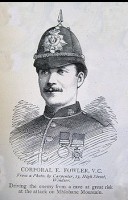
Posts : 7076
Join date : 2009-04-24
Age : 55
Location : Down South.
 |  Subject: Re: The Missing Colours Isandlwana Subject: Re: The Missing Colours Isandlwana  Tue Sep 11, 2012 7:50 pm Tue Sep 11, 2012 7:50 pm | |
| As Jackson found the missing order, I have found the missing colours.  Click Here |
|   | | Saul David 1879
Posts : 527
Join date : 2009-02-28
 |  Subject: Re: The Missing Colours Isandlwana Subject: Re: The Missing Colours Isandlwana  Tue Sep 11, 2012 8:03 pm Tue Sep 11, 2012 8:03 pm | |
| Very interesting post LH. And there's is of course no reason to doubt it. Just need verifying, but I'm sure you will be searching for a link  |
|   | | impi

Posts : 2308
Join date : 2010-07-02
Age : 44
 |  Subject: Re: The Missing Colours Isandlwana Subject: Re: The Missing Colours Isandlwana  Tue Sep 11, 2012 8:20 pm Tue Sep 11, 2012 8:20 pm | |
| Was there a Colonel Talbot in the 2nd 24th regiment. |
|   | | Drummer Boy 14

Posts : 2008
Join date : 2011-08-01
Age : 27
 |  Subject: Re: The Missing Colours Isandlwana Subject: Re: The Missing Colours Isandlwana  Tue Sep 11, 2012 9:44 pm Tue Sep 11, 2012 9:44 pm | |
| - littlehand wrote:
- As Jackson found the missing order,
LH What do you mean by missing order ? Jackson found an order from the 19th of January and the Orders to column commanders along with a whole load of other iteams such as Molife's account of Isandlwana and some maps by Henderson. |
|   | | impi

Posts : 2308
Join date : 2010-07-02
Age : 44
 |  Subject: Re: The Missing Colours Isandlwana Subject: Re: The Missing Colours Isandlwana  Tue Sep 11, 2012 10:26 pm Tue Sep 11, 2012 10:26 pm | |
| Correct! Jackson found that, LH found this. Ithat parts a joke DB. He having a laugh. |
|   | | Dave

Posts : 1603
Join date : 2009-09-21
 |  Subject: Re: The Missing Colours Isandlwana Subject: Re: The Missing Colours Isandlwana  Wed Sep 12, 2012 8:17 am Wed Sep 12, 2012 8:17 am | |
| Interesting post LH. There are a few names in the picture. I'll have a look about, see if I can find anything.  |
|   | | Mr M. Cooper
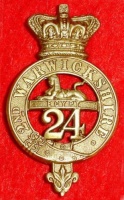
Posts : 2591
Join date : 2011-09-29
Location : Lancashire, England.
 |  Subject: The missing colours iSandlwana Subject: The missing colours iSandlwana  Thu Sep 13, 2012 3:48 pm Thu Sep 13, 2012 3:48 pm | |
| Hi all. It appears to be a mystery of how the colours got to Paris, also If the remains of the colours were handed over to Col Talbot by the Baron St George, how come no one seems to know much about all this, and why is there nothing mentioned in various books and other publications about the lost colours being found, surely historians would have discovered something about this during their research, and above all, where are they now? Rather odd I think, but as always, another interesting post LH.  |
|   | | littlehand

Posts : 7076
Join date : 2009-04-24
Age : 55
Location : Down South.
 |  Subject: Re: The Missing Colours Isandlwana Subject: Re: The Missing Colours Isandlwana  Fri Sep 14, 2012 10:26 pm Fri Sep 14, 2012 10:26 pm | |
| Well, I have spend days looking for a connection to those mentioned in the artical. Can't find nothing in connection with the colours. I'm away for a few days, but will continue the search when I get back. If anyone finds anything please post.  |
|   | | littlehand

Posts : 7076
Join date : 2009-04-24
Age : 55
Location : Down South.
 |  Subject: Re: The Missing Colours Isandlwana Subject: Re: The Missing Colours Isandlwana  Fri Sep 14, 2012 10:33 pm Fri Sep 14, 2012 10:33 pm | |
| - Quote :
- littlehand wrote:
As Jackson found the missing order,
LH
What do you mean by missing order ?
Jackson found an order from the 19th of January and the Orders to column commanders along with a whole load of
other iteams such as Molife's account of Isandlwana and some maps by Henderson. How long was it in the draw, before Jackson found it. |
|   | | Mr M. Cooper

Posts : 2591
Join date : 2011-09-29
Location : Lancashire, England.
 |  Subject: The missing colours iSandlwana Subject: The missing colours iSandlwana  Sun Sep 16, 2012 11:56 pm Sun Sep 16, 2012 11:56 pm | |
| Hi LH. I also have been searching online for any information about these 'missing colours', and like your good self, I cannot find anything. I wonder if it was a 'tall tale' put about by someone unknown, and found it's way into the newspaper?   |
|   | | Chard1879
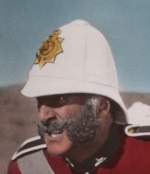
Posts : 1261
Join date : 2010-04-12
 |  Subject: Re: The Missing Colours Isandlwana Subject: Re: The Missing Colours Isandlwana  Mon Sep 17, 2012 12:13 am Mon Sep 17, 2012 12:13 am | |
| So we have another un- solved mystery  |
|   | | Mr M. Cooper

Posts : 2591
Join date : 2011-09-29
Location : Lancashire, England.
 |  Subject: The missing colours iSandlwana Subject: The missing colours iSandlwana  Mon Sep 17, 2012 12:25 am Mon Sep 17, 2012 12:25 am | |
| Hi Chard. Well, it does look a bit like that doesn't it. I would have thought that with all the historians and researchers that delve into great detail about all things AZW, that someone would have discovered something about all this business with the 'missing colours', and if the article in the newspaper was genuine, then where are these colours now? Very odd isn't it.   |
|   | | bill cainan
Posts : 225
Join date : 2011-09-19
 |  Subject: Re: The Missing Colours Isandlwana Subject: Re: The Missing Colours Isandlwana  Mon Sep 17, 2012 8:49 am Mon Sep 17, 2012 8:49 am | |
| All
If the Colour had really been found in Paris, then I'm sure it wiould have ultimately found its way back to the Regiment. No, as far as the Regiment is concerned, both Colours of the 2/24th were lost at Isandlwana, and never recovered. With regard to the newspaper article, I wonder if the story originally comes from the episode where the Colours of the 69th Regiment (later 2/Welch) which were lost at Quatre Bras and later re-appeared in a French chateau ?
Bill |
|   | | bill cainan
Posts : 225
Join date : 2011-09-19
 |  Subject: Re: The Missing Colours Isandlwana Subject: Re: The Missing Colours Isandlwana  Mon Sep 17, 2012 3:19 pm Mon Sep 17, 2012 3:19 pm | |
| Hi all
I had a phone call this morning that reminded me of something that is probably quite relevant. We do have in the museum a "fake" regimental colour that was supposed to be that of the 2/24th. After some investigation it was clarified that this colour was in fact the result of a needlework exercise done while the Regiment was in India. This is probably the one that went via Paris !
Bill |
|   | | Chelmsfordthescapegoat

Posts : 2593
Join date : 2009-04-24
 |  Subject: Re: The Missing Colours Isandlwana Subject: Re: The Missing Colours Isandlwana  Mon Sep 17, 2012 5:14 pm Mon Sep 17, 2012 5:14 pm | |
| Excellent work Bill. Mystery solved... I do remember a post on the forum, where it was mentioned that an officers wife, was quite handy with a needle and thread.. |
|   | | Mr M. Cooper

Posts : 2591
Join date : 2011-09-29
Location : Lancashire, England.
 |  Subject: The missing colours iSandlwana Subject: The missing colours iSandlwana  Mon Sep 17, 2012 7:04 pm Mon Sep 17, 2012 7:04 pm | |
| Good work Bill, very well done.
I had been pondering about this for some time, and during my searches I found that this might have something to do with the old 69th.
The 69th was the old 2nd Btn of the 24th foot, it was redesignated the 69th in 1758, then in 1782 it became the 69th (South Lincolnshire) regiment. It was the 2nd Btn 69th (South Lincolnshire) regiment that fought at Quatre Bras, it could not form square in time before the cavalry attacked and lost many men and its colours, this was blamed on the Prince of Orange. The 2nd Btn 69th (South Lincolnshire) regiment ceased to exist in 1816, and the 1st Btn 69th (South Lincolnshire) regiment was later to become part of the Welch under the government (Childers) reforms of 1881. So there is a link with the 24th foot, as the 69th was the old 2nd Btn of the 24th foot, but was redesignated the 69th in 1758.
Again Bill, well done.
Martin.
|
|   | | impi

Posts : 2308
Join date : 2010-07-02
Age : 44
 |  Subject: Re: The Missing Colours Isandlwana Subject: Re: The Missing Colours Isandlwana  Fri Feb 01, 2013 3:50 pm Fri Feb 01, 2013 3:50 pm | |
| It is said that the tents were searched. Would there have been any left standing, i thought some were carried away, others burned. |
|   | | | | The Missing Colours Isandlwana |  |
|
Similar topics |  |
|
| | Permissions in this forum: | You cannot reply to topics in this forum
| |
| |
| |
